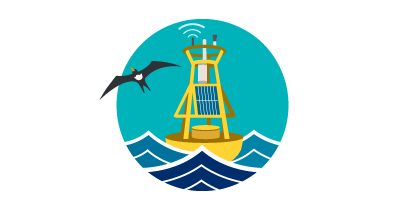CARICOOS stands for the Caribbean Coastal Ocean Observing System and is funded by the National Oceanic and Atmospheric Administration, Integrated Ocean Observing System office. CARICOOS operates data buoys, coastal meteorological stations, vessels, instruments and radars, which comprise its network of observing assests. CARICOOS has stakeholders from tourism and marine recreation, maritime transportation, security, and human and ecosystem health and economics. The focus is on meeting needs for improved real-time data products and forecasts of coastal weather ⟨winds⟩, currents, waves, water quality and hurricane-driven inundation for the U.S. Carribean Exclusive Economic Zone ⟨EEZ⟩. Here at Rutgers we recieve data from stations in and around the western and southern coasts of Puerto Rico and process and study it to help further all of these goals. To learn more about CARICCOS click here
HF RADAR
High-Frequency ⟨HF⟩ radar uses the high-frequency radio waves to track the movement of the ocean surface currents. The phsyics behind HF radar is realitively simple, but the actual task of mapping surface currents witha modern radar sensor is much more complex. By utilizing the Bragg principle/"Bragg-scattering" combined with an observed Doppler-frequency shift, two or more radars observing the same patch of the ocean ,located at different viewing angles, can sum the surface current radial velocity components to produce velocity vectors.
To learn more about CODAR Ocean Sensors or or to browse the CODAR website click here
To see the CARICOOS HF Radar Observations of Surface Currents click here
